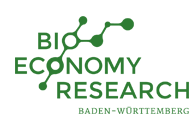Macroeconomic analysis of biomass use by means of a CGE Model
What macroeconomic effects does an increased use of biomass have? This project aimed at answering this question by performing a macroeconomic analysis of energetic and material use of biomass using a computable general equilibrium (CGE) model.
PACE is a multi-regional, multi-sectoral CGE model of global trade and energy use developed at Centre for European Economic Research (ZEW). Its strength is the analysis of effects from climate and energy policy measures. In this context, it is frequently consulted to advice policy makers.
In this project, biomass was introduced to the PACE-model in order to represent economic potentials of its energetic and material use. In this way, effects of an increased use of biomass, for instance on GDP growth, factor prices, the use of other energy carriers, greenhouse gas emissions and sectoral production could be computed. Based on scenarios developed within the research program’s Competence Network Modeling such impacts were analyzed. We found that an increased energetic and material use of biomass has only limited effects on macroeconomic indicators. However, several sectors such as forestry, the chemical industry as well as construction show some pronounced shifts in production and in the structure of their intermediate product use. Greenhouse gas emissions reduction targets can be achieved with slightly less efforts.
| Project title | Macroeconomic analysis of biomass use by means of a CGE model and the possible creation of interfaces with energy systems and agricultural sector models |
| Institution | Centre for European Economic Research (ZEW) |
| Research group | Dr. Sebastian Voigt |
| Project status | completed |

